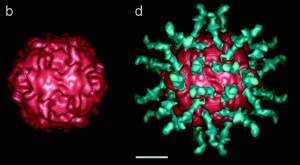Update on global polio eradication and the polio vaccine

Shortly after the successful global Smallpox Eradication Programme (SEP) in the 80's, world leaders and public health officials announced a plan to eradicate poliomyelitis (polio) off the face of the Earth; the Pan American Health Organization and the World Health Organization (WHO) together championed the cause. They originally anticipated the virus would be eradicated by 2000. Yet here we are in 2015 and the virus is still making headlines around the world.
When the polio eradication endeavour was initiated, the virus was endemic to 125 countries worldwide, but today that number was curtailed down to two: Afghanistan and Pakistan. Thus far in 2015, the latter has seen 30 cases of wild polio and the former has seen just 9. For Pakistan, those numbers are very encouraging as by this date in 2014, there had been 130 cases, while the year-to-date numbers for Afghanistan are about the same from 2014. Earlier this summer, encouraging news from the eradication front were unveiled, as Africa celebrated one year without wild polio cases. The WHO does not designate the virus eradicated from an area until there have been no reported wild cases for three years.
In August of 1994, the Western Hemisphere was declared polio free, followed by Europe eight years later. However, recent cases of vaccine-derived polio that have spurted in Europe and Africa (two in the Ukraine and one in Mali) raised some concern. Vaccine-derived polio occurs because the current vaccine administered, the oral polio vaccine (OPV), is a live, attenuated vaccine. Vaccinated children shed the attenuated virus in their stool for up to 12 months post inoculation. These weakened strains can, albeit very rarely, mutate and become pathogenic again and infect unvaccinated children.
The Ukraine was especially prone to such incidences, as polio vaccine coverage among children hovers around 50 percent. Cases of vaccine-derived polio are generally milder than those acquired from wild polio and they generally do not have the same level of transmissibility as do the wild strains. In 2014, globally there were 55 cases of vaccine-derived polio accounting for 15 percent of all cases. The original polio vaccine, created by Jonas Salk, consisted of an inactivated poliovirus vaccine (IPV). Nonetheless, many contemporaneous scientists developed the OPV, with Albert Sabin being the most notable one. Although both types are still available, the OPV has been preferred by the eradication effort because, despite its drawbacks, it is effective and inexpensive (one two-drop dose costs about 10 cents).
As we close in on the potential end of the eradication effort, the WHO announced an initiative to transition from the OPV to the IPV to eliminate vaccine-derived cases. The first step of the transition will involve removing wild serotype 2 from the vaccine; there were no observed cases of wild polio caused by the serotype 2 since the late 90's. However, it cannot simply be withdrawn because vaccinated children will still be shedding serotype 2 for some time, with the potential to mutate and spread. Moreover, If withdrawn too quickly, even vaccinated children will be susceptible. Instead, a bivalent-OPV (serotypes 1 and 3) will be administered to all newborns at 14 weeks of age, along with an IPV that protects against serotype 2. By 2018, the IPV will take over as the sole vaccine and WHO officials hope that by 2024, the virus will be fully eradicated from the planet.













